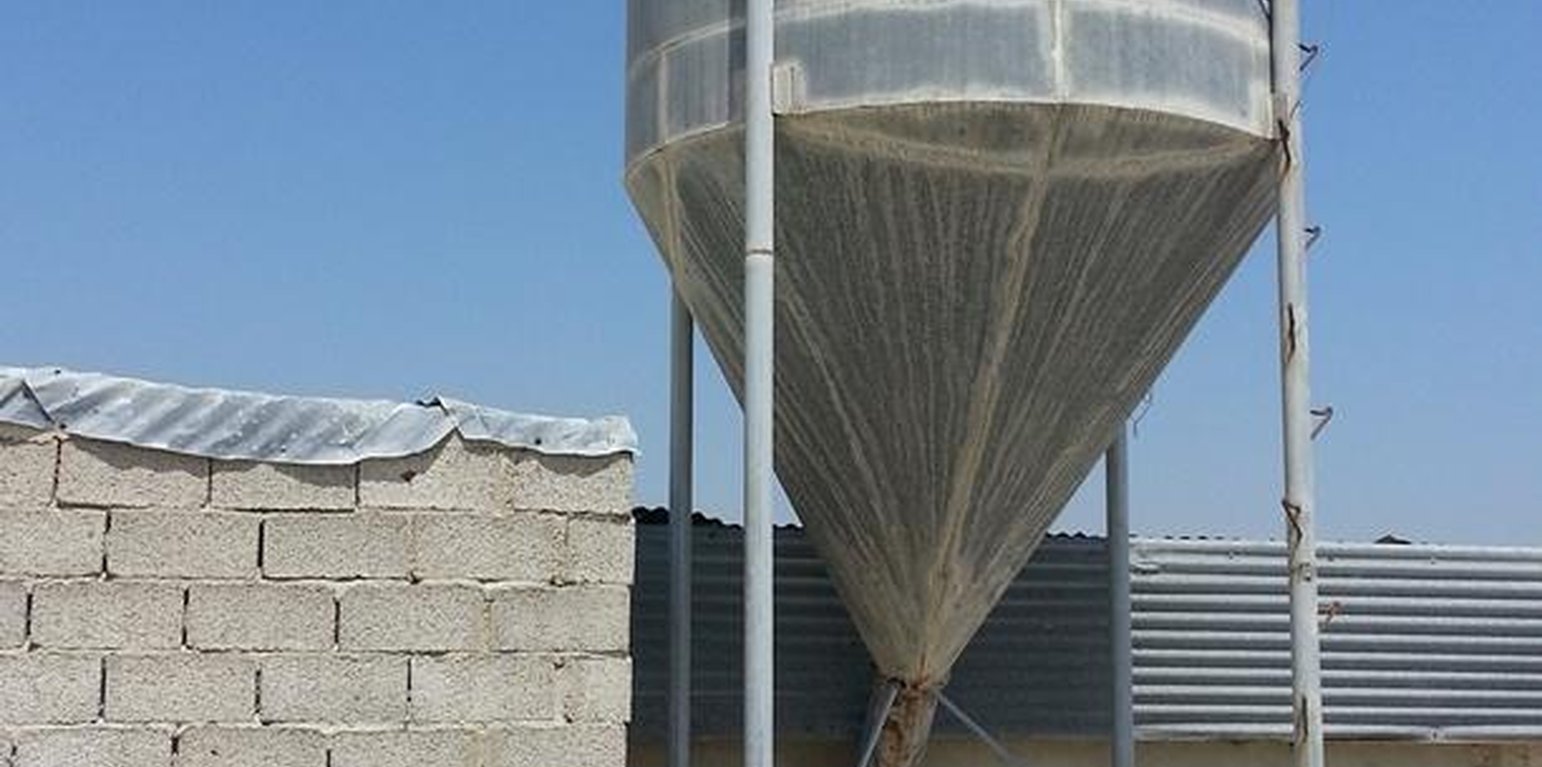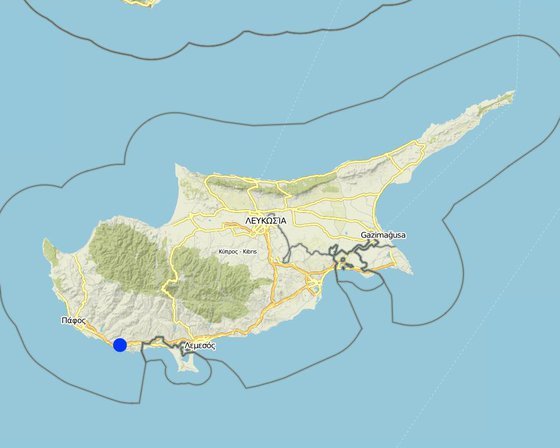



Goats graze on almost all plants even on thorny shrubs. The pastoralist in the past (some still do now a days) use to spread seeds on the grazing area in order to provide fodder for the animals. Another method is to provide fodder within the farm using dry seeds of wheat, barley, soya etc which can be stored in big silos.
Purpose of the Technology: The purpose of this technology is to provide to the animals with the food they need in order to minimize or even stop them from grazing on the wild flora such as shrubs, trees and annual plants. Within the study area, most of the vegetation is vanished and only traces of plant species can be found. Even the thorny shrubs like Callicotome villosa and Rhamnus oleiodes are suffering from overgrazing.
Establishment / maintenance activities and inputs: Fodder can be provided in-farm and out-farm. In-farm fodder is provided using a silo in which dry fodder can be store, mixed and deliver to the animals mechanically. Out-farm fodder is provided seasonally since the seeds should be seeded and plants must grow up before eaten by the animals
Natural / human environment: By providing fodder to the animals in-farm, grazing is avoided since the animals remain within the farm. This way, animal diseases transmission from one farm to another can be minimized. Also, animals may travel a long distance to find food whose energy miight be less than the energy they use.
Seeding on the hills will attract the goats and stop them from grazing on other wild plant species. Minimizing grazing will allow to the vegetation to recover and grow up providing good aesthetic view and also shelter for the wild animals. Furthermore, vegetation increase will contribute to the decrease of soil erosion and the increase of organic matter.

Lieu: Pissouri, Limassol, Chypre
Nbr de sites de la Technologie analysés:
Diffusion de la Technologie: répartie uniformément sur une zone (approx. 10-100 km2)
Dans des zones protégées en permanence ?:
Date de mise en oeuvre: il y a moins de 10 ans (récemment)
Type d'introduction





| Spécifiez les intrants | Unité | Quantité | Coûts par unité (euro) | Coût total par intrant (euro) | % des coût supporté par les exploitants des terres |
| Main d'œuvre | |||||
| Labour | ha | 1,0 | 116,0 | 116,0 | 100,0 |
| Equipements | |||||
| Stainless steel silo | ha | 1,0 | 2589,0 | 2589,0 | 100,0 |
| Fodder transfer tubes | ha | 1,0 | 1000,0 | 1000,0 | 100,0 |
| Matériel végétal | |||||
| Agricultural | ha | 1,0 | 427,0 | 427,0 | 100,0 |
| Coût total de mise en place de la Technologie | 4'132.0 | ||||
| Coût total de mise en place de la Technologie en dollars américains (USD) | 5'366.23 | ||||
| Spécifiez les intrants | Unité | Quantité | Coûts par unité (euro) | Coût total par intrant (euro) | % des coût supporté par les exploitants des terres |
| Main d'œuvre | |||||
| Labour | ha | 1,0 | 233,0 | 233,0 | 100,0 |
| Matériel végétal | |||||
| Seeds | ha | 1,0 | 427,0 | 427,0 | 100,0 |
| Coût total d'entretien de la Technologie | 660.0 | ||||
| Coût total d'entretien de la Technologie en dollars américains (USD) | 857.14 | ||||
Spreading cereals and legumes
By providing fodder all year round
By providing fodder all year round
Better quality of dairy products
During the first year, the cost of the Silo
Due to production increase
In-farm fodder provision. Labor hours are reduced due to the presence of fodder in the silo. Simplified farm operations through using the silo.
Animals from different farms are no more in contact
Seeding on the hill reduces erosion
Between pastoralists
Shepherds who provide fodder and/or are seeding cereals and legumes on grazing land, produce more milk and meat. Therefore, they have higher incomes and a better life. They are able to send their children to school and provide a health care insurance to their families.
Due to vegetation cover
Due to vegetation cover
Due to vegetation cover
Due to soil cover by cereals and legumes
May be in the near future, antagonism between cereals and legumes with other wild type species will appear
Especially birds
On site since the animals will graze in the seeded area
On site since the animals will graze in the seeded area